-
Sale!
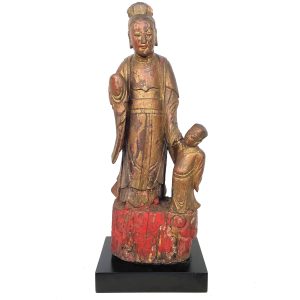

$2,250.00 Original price was: $2,250.00.$1,700.00Current price is: $1,700.00.
Ht: 26” W: 10.25” D: 7.5″ |CALL 213-568-3030 OR EMAIL VANISHINGARTS@GMAIL.COM FOR SHIPPING COST
This rare, sensitive and beautifully carved image probably depicts Guanyin the Bodhisattva of Compassion holding a young child’s hand glancing down with compassion and tenderness while he looks up for assurance and protection. This unique provincial Popular Religion carving depicts her as humble, engaging and modestly clad with a serene softness. It is similar to but different from Songzi Guanyin, the “Child-Giving Guanyin” to whom couples pray to become fertile and to bear a son.
-
Sale!
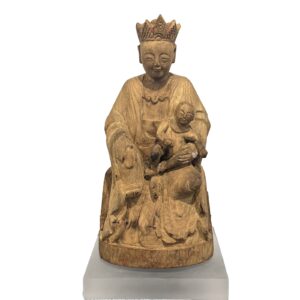
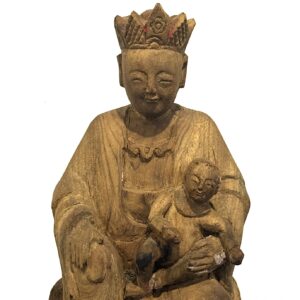
$1,350.00 Original price was: $1,350.00.$1,250.00Current price is: $1,250.00.
H: 11” W: 5.75” D: 5.125” | FREE SHIPPING WITHIN CONTINENTAL U.S.!
This very rare and fine 16th century home shrine image displays the benign and compassionate countenance of Songzi Guanyin the “Bestower of Children.” With round face and joyful half-closed and eyes, she looks lovingly at the child whose arm is draped over hers.and leans slightly forward, wearing a 5- lobed crown centered with a camellia flower a Chinese symbol of young sons and daughters. The inscription on the back dates the piece to 1521-1567
-
Sale!
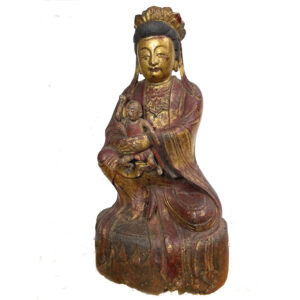
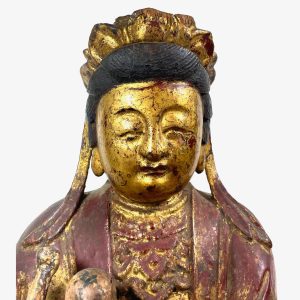
$2,650.00 Original price was: $2,650.00.$2,150.00Current price is: $2,150.00.
H: 14.5” W: 8.25” D: 5” | FOR SHIPPING INFORMATION CONTACT US AT 213-568-3030
This beautiful Guanyin is carved in the rural provincial tradition: a modest, compassionate and humble deity with a simple “crown” of lotus leaves holding and unadorned robe with flowing sleeves extended to her plain pedestal lined with simple leaves. Her face is extremely empathetic with a slight smile as she tenderly grasping her child who resembles the infant Buddha. Given its size and elegance it was probably on a home altar of a well to do couple desirous of having a (male) baby.
End of content
End of content






